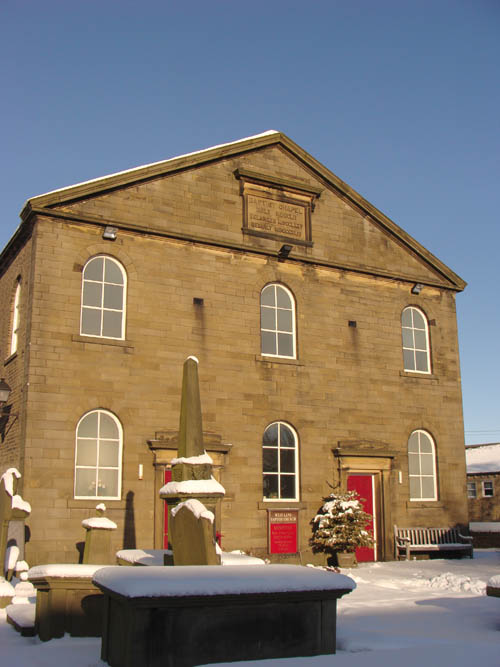
West Lane Baptist Chapel
The original West Lane Baptist Church was formed in 1752 by a group of people who had broken away from the Established Anglican Church. The first half of the eighteenth century saw a number of independent religious revivals across the UK led by evangelical pioneers such as John Wesley, Benjamin Ingham and William Darney. Between 1742 – 1763 the incumbent Anglican vicar at Haworth Church, William Grimshaw, was responsible for creating a religious revival through his evangelical preaching. He quickly established a strong following of converts, many of whom wanted him to leave the Anglican church, although he was unwilling. One of Grimshaw’s converts, James Hartley also came under the influence of a Baptist ministry in Barnoldswick and formed a small group who broke away from the established church.
There is a history of dissent in the Worth Valley that dates back to the seventeenth century. A strong Puritan tradition combined with the independent streak of local yeoman farmers and weavers meant many resented governance from afar and were keen to have control of their local church. In 1752 James Hartley formed a Baptist church at West Lane in Haworth, the first of many new churches established in the area under the influence of Grimshaw. Hartley became its first minister and remained so until his death in 1780. He is buried in the West Lane churchyard alongside his wife Anne – their gravestones have been laid immediately in front of the front of the building.
The original building was considered unsafe and replaced in 1775 and rebuilt again in 1844 with the building which stands there today West Lane Baptist church celebrated its 250th anniversary in 2002 and is now a mainstream Baptist Union church practising open membership and open communion. In recent years the Baptists have consolidated their space, selling off a lot of the land and the back of the building to private developers and making use of either the upstairs or downstairs space for their regular worship. The chapel is used daily by the community and the congregation for events, prayer meetings, youth groups and choir rehearsals, and even the outdoor space is utilised for growing fruit and vegetables.